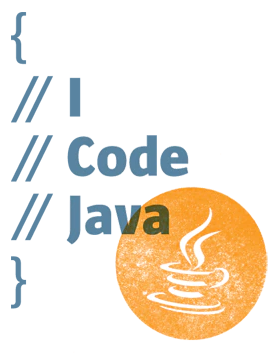多态是面向对象编程的三大特性之一,C++提供了两种主要的多态形式:动态多态和静态多态。本文将详细解释它们的区别,并通过代码示例进行说明。
什么是多态?
多态(Polymorphism)指同一个接口可以表现出不同的行为。在C++中,这允许我们使用统一的接口来处理不同类型的对象。
动态多态(运行时多态)
动态多态在程序运行时确定调用哪个函数,主要通过虚函数和继承机制实现。
实现机制
- 使用虚函数(virtual function)
- 通过继承关系
- 运行时通过虚函数表(vtable)决定调用哪个函数
代码示例
1#include <iostream> 2using namespace std; 3 4// 基类 5class Animal { 6public: 7 // 虚函数 8 virtual void makeSound() { 9 cout << "Animal makes a sound" << endl; 10 } 11 12 virtual ~Animal() = default; // 虚析构函数 13}; 14 15// 派生类 16class Dog : public Animal { 17public: 18 void makeSound() override { 19 cout << "Dog barks: Woof! Woof!" << endl; 20 } 21}; 22 23class Cat : public Animal { 24public: 25 void makeSound() override { 26 cout << "Cat meows: Meow! Meow!" << endl; 27 } 28}; 29 30// 使用动态多态 31void animalSound(Animal* animal) { 32 animal->makeSound(); // 运行时决定调用哪个makeSound 33} 34 35int main() { 36 Dog dog; 37 Cat cat; 38 Animal animal; 39 40 // 通过基类指针调用,表现出多态行为 41 Animal* animals[] = {&animal, &dog, &cat}; 42 43 for (auto* animal : animals) { 44 animalSound(animal); 45 } 46 47 return 0; 48} 49
输出:
1Animal makes a sound 2Dog barks: Woof! Woof! 3Cat meows: Meow! Meow! 4
动态多态特点
- 运行时绑定:函数调用在运行时决定
- 灵活性高:可以在运行时改变行为
- 性能开销:有虚函数表查找的开销
- 必须使用指针或引用:通过基类指针或引用调用
静态多态(编译时多态)
静态多态在编译时确定调用哪个函数,主要通过函数重载和模板实现。
1. 函数重载
1#include <iostream> 2using namespace std; 3 4class Calculator { 5public: 6 // 函数重载 - 静态多态 7 int add(int a, int b) { 8 return a + b; 9 } 10 11 double add(double a, double b) { 12 return a + b; 13 } 14 15 string add(const string& a, const string& b) { 16 return a + b; 17 } 18}; 19 20int main() { 21 Calculator calc; 22 23 cout << "Int addition: " << calc.add(5, 3) << endl; 24 cout << "Double addition: " << calc.add(5.5, 3.3) << endl; 25 cout << "String addition: " << calc.add("Hello, ", "World!") << endl; 26 27 return 0; 28} 29
输出:
1Int addition: 8 2Double addition: 8.8 3String addition: Hello, World! 4
2. 模板(泛型编程)
1#include <iostream> 2#include <vector> 3#include <list> 4using namespace std; 5 6// 函数模板 - 静态多态 7template<typename T> 8T multiply(T a, T b) { 9 return a * b; 10} 11 12// 类模板 13template<typename Container> 14void printContainer(const Container& container) { 15 for (const auto& item : container) { 16 cout << item << " "; 17 } 18 cout << endl; 19} 20 21// 特化示例 22template<> 23string multiply<string>(string a, string b) { 24 return "String multiplication not supported"; 25} 26 27int main() { 28 // 模板函数使用 29 cout << "Int multiplication: " << multiply(5, 3) << endl; 30 cout << "Double multiplication: " << multiply(5.5, 2.0) << endl; 31 cout << "String multiplication: " << multiply<string>("hello", "world") << endl; 32 33 // 模板类使用 34 vector<int> vec = {1, 2, 3, 4, 5}; 35 list<string> lst = {"apple", "banana", "cherry"}; 36 37 cout << "Vector: "; 38 printContainer(vec); 39 40 cout << "List: "; 41 printContainer(lst); 42 43 return 0; 44} 45
输出:
1Int multiplication: 15 2Double multiplication: 11 3String multiplication: String multiplication not supported 4Vector: 1 2 3 4 5 5List: apple banana cherry 6
3. CRTP(奇异递归模板模式)
1#include <iostream> 2using namespace std; 3 4// CRTP基类 5template<typename Derived> 6class AnimalBase { 7public: 8 void makeSound() { 9 static_cast<Derived*>(this)->makeSoundImpl(); 10 } 11}; 12 13// 派生类 14class Dog : public AnimalBase<Dog> { 15public: 16 void makeSoundImpl() { 17 cout << "Dog barks: Woof! Woof!" << endl; 18 } 19}; 20 21class Cat : public AnimalBase<Cat> { 22public: 23 void makeSoundImpl() { 24 cout << "Cat meows: Meow! Meow!" << endl; 25 } 26}; 27 28// 使用静态多态 29template<typename T> 30void animalSound(AnimalBase<T>& animal) { 31 animal.makeSound(); // 编译时决定调用哪个函数 32} 33 34int main() { 35 Dog dog; 36 Cat cat; 37 38 animalSound(dog); 39 animalSound(cat); 40 41 return 0; 42} 43
输出:
1Dog barks: Woof! Woof! 2Cat meows: Meow! Meow! 3
动态多态 vs 静态多态
| 特性 | 动态多态 | 静态多态 |
|---|---|---|
| 绑定时间 | 运行时 | 编译时 |
| 实现机制 | 虚函数、继承 | 模板、函数重载 |
| 性能 | 有运行时开销(虚表查找) | 无运行时开销 |
| 灵活性 | 运行时决定行为 | 编译时决定行为 |
| 二进制大小 | 较小 | 可能较大(模板实例化) |
| 调试难度 | 相对容易 | 相对困难 |
| 使用场景 | 需要运行时动态行为 | 性能要求高,类型已知 |
实际应用建议
使用动态多态的场景:
- 需要在运行时决定对象类型
- 有复杂的继承层次结构
- 需要插件架构或动态加载
- 代码可读性和维护性更重要
使用静态多态的场景:
- 性能是关键因素
- 类型在编译时已知
- 需要避免虚函数开销
- 使用模板元编程
总结
C++中的多态提供了强大的代码复用和灵活性:
- 动态多态通过虚函数提供运行时灵活性,适合需要动态行为变化的场景
- 静态多态通过模板和重载提供零开销的抽象,适合性能敏感的场景
在实际开发中,应根据具体需求选择合适的多态方式,有时甚至可以结合使用两者以获得最佳效果。理解这两种多态的区别和适用场景,有助于编写更高效、更灵活的C++代码。
《C++中的多态:动态多态与静态多态详解》 是转载文章,点击查看原文。

